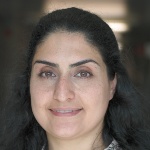Research in Project Area A
Flow and transport processes in domains composed of a porous medium and an adjacent free-flow region appear in a wide range of industrial, bio-medical and environmental applications. Evaporation from soil is a good example of the immense variety of challenges that appear in such a system. The corresponding patterns and evaporation rates strongly influence the water and energy balance of terrestrial surfaces, driving a multitude of climatic processes. To predict evaporative drying rates from porous media remains a challenge for several reasons. First, there are complex ambient conditions at the interface, such as radiation, humidity, temperature, air velocity, turbulence and boundary-layer effects. Second, the small-scale internal porous-medium properties lead to abrupt transitions and complex fluid dynamics. Third, the processes involved are characterised by complex interactions between the porous medium and the free-flow system.
All project in Project Area A are concerned with these challenges on various different scales.
Projects
A01: Fluid properties and interfacial properties in confined space from classical density functional theory and molecular simulations
Most porous materials involve non-uniform solid surfaces. This project applies and further develops classical density functional theory (DFT) to study how chemical and structural heterogeneities of the porous material alter adsorption isotherms, wetting behaviour, surface tensions, and contact angles. Because water is the most important fluid for porous media, this project furthermore critically analyses the DFT formalism for water. Molecular simulations are conducted for assessing and improving the DFT model for water. With these developments, the project allows meaningful predictions of interfacial properties.
A02: Advanced modelling concepts for coupling free flow with porous-media flow
Exchange processes across a porous-medium free-flow interface occur in a wide range of environ-mental, technical and bio-mechanical systems. The primary objectives of this project are to (i) analyse and improve the theory, as well as (ii) offer solution methods for non-isothermal, multi-phase, multi-component flow and transport processes at a porous-medium free-flow interface and (iii) investigate the influence of these processes on both the porous medium and free-flow region for various application scales.
A03: Development of interface concepts using averaging techniques
New, more general interface conditions are required to couple free-flow and porous-medium systems since traditional coupling concepts provide reliable results for simplified cases only. Averaging theory is a powerful mathematical tool that can be applied to derive such conditions. The objectives of this project are to (i) derive new interface concepts for single- and multi-phase flow systems using averaging techniques, (ii) validate the newly developed interface conditions, and (iii) develop robust and efficient numerical methods for coupled flow problems.
A05: Pore scale formulations for evaporation, and upscaling to REV scale
Drying and evaporation in porous media is relevant for many engineering processes and for soil cultivation. These processes occur over several scales, where the evolving liquid-gas interface is important to describe the evaporation at the pore scale, while its effect lies on the REV scale. Our goal is to provide a better mathematical description of REV-scale evaporation by starting with a pore-scale description of the relevant processes and using upscaling to derive an effective model at REV scale. The effect of the evolving interface is explicitly taken into account and different approaches to describe the evolving interface at the pore scale will be investigated.
A06: Self-pumping transpiration cooling
This project investigates experimentally the exchange of energy, momentum and mass between free-flow and porous media under turbulent, non-isothermal and evaporative conditions. The target application is a self-pumping transpiration cooling system, where inhomogeneities in thermal loads and/or porous media topology (e.g., due to clogging) affect locally the capillary forces and globally the coupling conditions at the free-flow/porous media interface. By measuring fluid and surface temperatures, time-resolved velocity and concentration fields, our objective is to identify the driving processes and formulate improved interfacial coupling conditions.
Contact

Samaneh Vahid Dastjerdi
Dr.-Ing.Postdoctoral Researcher, Management, Project MGK, Central Project Z

Kundan Kumar
Prof.Mercator Fellow, Research Project B03



